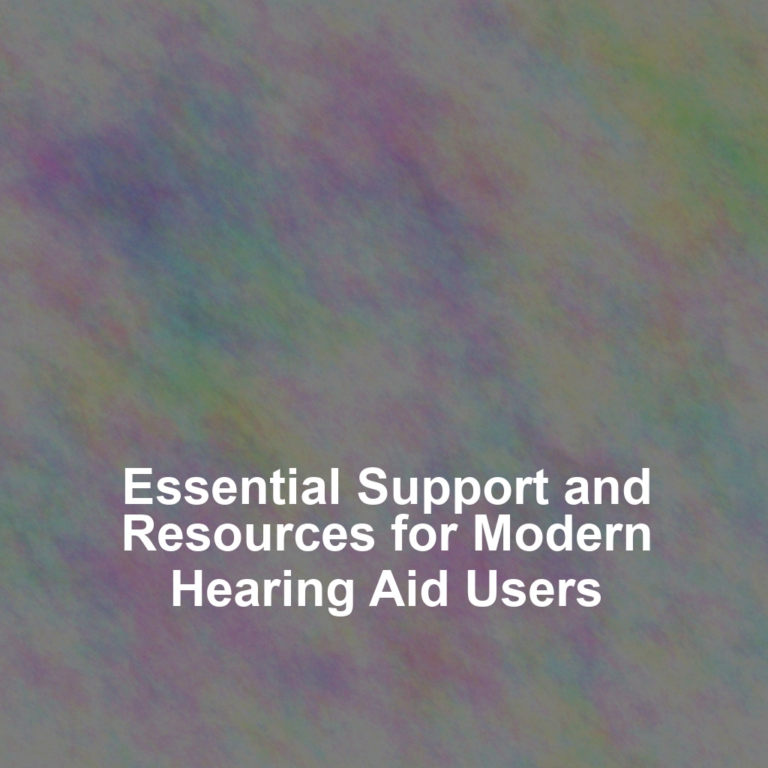Ear wax, scientifically termed cerumen, is a natural secretion produced by specialized glands located within the ear canal. While many individuals may perceive ear wax as an inconvenience, it performs vital functions that are crucial for maintaining overall ear health and functionality. In this detailed article, we will delve into the multifaceted nature of ear wax, outlining its essential roles and offering practical strategies for effective management. By doing so, we aim to enhance your understanding of ear hygiene and health, ensuring you can maintain optimal auditory well-being.
Delving Deep into the Composition and Unique Characteristics of Ear Wax
Ear wax is a viscous substance secreted by ceruminous glands found in the ear canal. These glands produce ear wax, which comprises a mixture of several components, including dead skin cells, hair, and various glandular secretions. The texture and consistency of ear wax can vary significantly among individuals, ranging from dry and crumbly to moist and sticky. This variability is influenced by genetic predispositions and environmental factors, contributing to the diverse experiences individuals have with ear wax.
Additionally, the characteristics of ear wax can reveal important insights into a person’s overall health and hygiene practices. The production and texture of ear wax serve as indicators of the body’s natural processes and reflect how effectively the ear is maintaining its self-cleaning and protective functions. A comprehensive understanding of ear wax, including its composition and variability, is essential for appreciating its critical role in ensuring ear health.
Uncovering the Essential Functions of Ear Wax for Auditory Health

While ear wax may be seen as bothersome, it actually serves several crucial functions that significantly contribute to ear health and overall well-being:
1. Acting as a Natural Barrier Against Harmful Elements
One of the primary functions of ear wax is to form a protective barrier around the delicate structures of the ear. It acts as a natural defence mechanism, preventing foreign debris, dust, and insects from entering the ear canal. The adhesive quality of ear wax effectively traps these unwanted particles, stopping them from reaching the eardrum, which could otherwise lead to damage or infection. This protective function is vital, as it helps maintain the overall health of the ear, enhances hearing capabilities, and reduces the risk of auditory complications.
Moreover, ear wax plays an essential role in maintaining the ear’s ecosystem, creating an environment that is hostile to harmful microorganisms. This built-in defence mechanism keeps the ear canal clean and reduces susceptibility to infections, thereby preserving auditory function and overall ear health.
2. Providing Essential Lubrication for Optimal Ear Canal Health
Ear wax is not just a protective barrier; it also functions as a natural lubricant for the ear canal. The natural moisturising agents present in ear wax help keep the ear canal hydrated, preventing dryness and the associated discomfort or itching. This moisture is crucial for maintaining the integrity of the skin lining the ear canal, as adequate lubrication prevents irritation and promotes skin health. Without sufficient moisture, the delicate skin within the ear canal may become dry, leading to discomfort and potential complications, including infections.
In addition, the lubricating properties of ear wax facilitate the natural movement of wax towards the outer ear, promoting a self-cleaning mechanism that supports ear health. This ensures that the ear remains comfortable and functions optimally, enabling clear hearing and a pleasant auditory experience.
3. Understanding the Ear’s Natural Self-Cleaning Mechanism

The production of ear wax is a self-regulating process that assists in the removal of dirt and debris from the ear canal. As new ear wax is generated, older wax gradually migrates toward the outer ear, transporting any trapped particles with it. This self-cleaning mechanism is vital for keeping the ear canal clear and free from blockages. The continual movement of ear wax ensures that the ear remains clean and functional, facilitating optimal hearing while reducing the likelihood of infections.
This natural cleaning process is essential, as it helps prevent the accumulation of excessive ear wax, which can lead to blockages. By understanding the self-cleaning capabilities of ear wax, individuals can take appropriate measures to support their ear health and maintain optimal auditory function.
Recognising the Different Types of Ear Wax and Their Implications
There are two primary types of ear wax, each possessing distinct characteristics that can influence ear health:
1. Wet Ear Wax: Key Characteristics and Health Implications
Wet ear wax, also known as cerumen lipidicum, is the most common type found in the majority of individuals. It typically exhibits a softer and more moist consistency, making it easier to naturally expel from the ear canal. Individuals with wet ear wax generally experience a lower risk of ear wax blockages, as this consistency supports better movement and cleaning within the ear.
This type of ear wax often appears yellow or brown and is indicative of a healthy ear environment. Individuals with wet ear wax may find that their ears feel cleaner and more comfortable, further promoting the health of their auditory system.
2. Dry Ear Wax: Understanding Its Distinctive Properties

Dry ear wax, scientifically known as cerumen desiccans, has a distinct dry and flaky texture. Typically grey or beige in colour, it is more prevalent among individuals of East Asian descent. This type of ear wax can sometimes lead to a heightened risk of ear wax blockages, as its consistency makes it less likely to be expelled naturally from the ear canal.
Although the presence of dry ear wax is primarily determined by genetic factors and does not necessarily indicate any health concerns, individuals with this type of ear wax may need to adopt more proactive ear hygiene practices to prevent blockages and maintain optimal ear function.
Practical Strategies for Effectively Managing Ear Wax Accumulation
While ear wax is a natural and necessary substance, excessive accumulation can lead to discomfort, hearing impairment, or even infection. Here are some practical tips for managing ear wax effectively:
1. Avoid the Use of Q-Tips or Cotton Swabs for Ear Cleaning
Contrary to common belief, inserting Q-tips or cotton swabs into the ear canal can cause more harm than good. These implements can inadvertently push ear wax deeper into the canal, leading to blockages or even injury. Instead, it is advisable to use a warm washcloth to clean the outer parts of the ear. This gentle cleaning method helps maintain hygiene without disrupting the natural ear wax production and self-cleaning processes.
Utilising the correct techniques for ear cleaning can significantly reduce the risk of complications and support overall ear health. By steering clear of Q-tips and similar objects, individuals can ensure their ears remain comfortable and free from excessive wax buildup.
2. Embrace the Ear’s Natural Self-Cleaning Ability
In most instances, the ear possesses the capability to naturally expel excess ear wax. It is crucial to avoid using any tools or objects to remove wax, as this can disrupt the self-cleaning process and potentially inflict harm. Instead, gently clean the outer ear with a washcloth during regular bathing or showering. This practice helps remove any visible wax from the outer ear while allowing the ear canal to carry out its natural cleaning function.
Embracing the ear’s natural self-cleaning mechanism can lead to improved ear hygiene and reduce the likelihood of blockages, ensuring optimal hearing and comfort. By following this natural approach, individuals can promote ear health without unnecessary interventions.
3. Seek Professional Assistance When Necessary
If you experience symptoms of ear wax blockage, such as hearing loss, earache, or tinnitus, it is advisable to seek professional assistance. A healthcare provider or an ear specialist can safely and effectively remove excess wax using specialized tools or techniques tailored to your specific needs. They will evaluate your condition and provide appropriate treatment or advice to ensure your ear health is preserved.
Seeking professional help is crucial for addressing potential blockages and ensuring the ear canal remains clear and healthy. By consulting with an expert, individuals can receive tailored guidance on effective ear wax management that suits their unique circumstances.
Recognising the Critical Importance of Ear Wax for Maintaining Ear Health
Despite its reputation as a nuisance, ear wax plays a vital role in preserving ear health and functionality. Its protective, lubricating, and self-cleaning properties are essential for the well-being of the ears. While managing ear wax is important, it is equally vital to avoid excessive cleaning or removal attempts that may cause harm. By understanding the purpose and functions of ear wax, we can appreciate its significance and ensure the optimal health of our ears.
Frequently Asked Questions Regarding Ear Wax
1. What is ear wax and what is its composition?
Ear wax, scientifically known as cerumen, is a waxy substance secreted by ceruminous glands located within the ear canal. It is composed of a mixture of various substances such as dead skin cells, hair, and secretions from the glands, all of which contribute to its unique properties.
2. What are the functions of ear wax?
Ear wax serves several important purposes. It acts as a natural defence mechanism, safeguarding the ear from debris, dust, and insects. Additionally, it lubricates the ear canal and helps prevent dryness and itching. Furthermore, ear wax has a self-cleaning mechanism that aids in the removal of dirt and debris from the ear canal, contributing to overall ear health.
3. What types of ear wax exist?
There are two main types of ear wax. Wet ear wax, also referred to as cerumen lipidicum, is the most prevalent type, characterised by a softer and more moist consistency. In contrast, dry ear wax, known as cerumen desiccans, has a drier and flakier texture and is more commonly found among individuals of East Asian descent.
4. How can I effectively manage ear wax?
To effectively manage ear wax, it is essential to refrain from using Q-tips or cotton swabs, as these can push the wax further into the canal. Instead, clean the external parts of the ear gently with a warm washcloth. Allow the ear to self-clean naturally and avoid using any tools or objects to remove the wax. If you experience symptoms of ear wax blockage, seek professional assistance from a healthcare provider or an ear specialist who can safely remove the excess wax.
Originally posted 2022-02-05 01:28:38.





